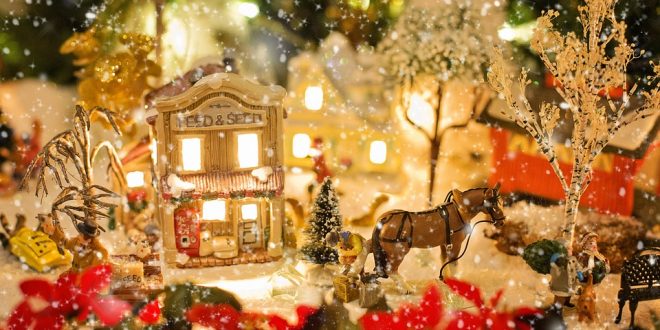By Serena Mao
With holiday season in full gear, millions of Americans are decking their homes out for the beloved Christmas celebration. The glorious Christmas tree, of course, is a traditional staple in our holiday decor. But two distinct choices have always stood at odds: the real tree versus the fake tree.
The unseen battle is real. Christmas tree production is a legitimate industry, and people of both sides self-promote aggressively. Companies spread their reasons on online and in-person ads, hoping to catch a larger market. Those in favor of bringing a real tree home exclaim that the ideal Christmas memory is picking out the perfect tree with family and friends. Only real trees bring that authentic Christmas feel and smell––fake trees don’t emanate the crisp smell of evergreen so often associated with winter. These advertisers try to play into the hopes of new families of shaping an original experience, rather than buying into the commercialization and technological evolution of the artificial tree.
On the other hand, those in favor of store bought trees feel they’re a step ahead of the game. The technology used in artificial trees has improved immensely: in fact, they claim that fake trees look near identical to their living counterparts, and that new methods of setup make it quick and easy to participate in the holiday tradition. They explain the LED lights are eye-catching and are already built into the tree, making it effortless to possess an impressing display. And it gets better, because many sellers offer the pine scent in store.
Environmentalists may want to dive deeper than the surface benefits. So which tree, in the end, is better for Mother Earth? Yet, even on the eco-friendly front, there’s still no clear answer. Studies have shown that the difference between the footprint of both trees isn’t significant; instead, it depends largely on the method in which you use it. For example, purchasing a real tree is similar to purchasing any other food like corn or lettuce––trees are grown in farms, just like a farm crop. Not to mention, these purchases support the local industry. In terms of disposal, trees are a natural material, meaning it can easily decompose. Additionally, many cities hold tree disposal events that assist in the environmentally friendly disposal method. Some cities, like New York, recycle old trees into mulch or compost.
In the realm of artificial trees, it is clear that plastic and metal do not decompose well in any substance. This means that throwing artificial trees in landfills can be devastating to the environment. Of course, artificial trees can be reused, meaning that the footprint shrinks as it the tree is used again and again. Studies find that an artificial tree should be used for ideally at least 5 years for it to be environmentally beneficial. In contrast, real trees must be disposed of at the end of each season.
In the end, there isn’t an easy choice in terms of which one to buy. It comes down to your ideal experience: do you want an authentic Christmas memory, or a simple way to put up a dazzling display? Whatever you choose, you’re still able to get in on the unmistakable Christmas spirit.
 Tempus Magazine By Students, For Students
Tempus Magazine By Students, For Students 



